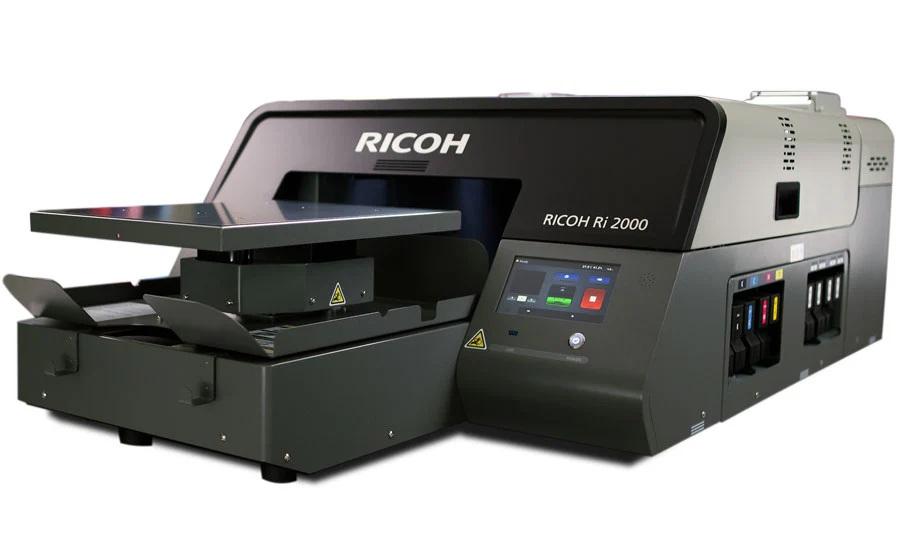Here are key tips to maximize efficiency with a Ricoh printer
1. Optimize Dual Carriage System
The dual carriage system of the Ricoh printer can pre-treat and print two garments at a time. If you run batches with both the platens engaged, you can significantly improve efficiency without compromising quality. It will reduce the overall print time, improve workflow, and allow printing more garments in minimum time.
2. Leverage Pre-Treatment
Pre-treatment is crucial for quality. Ricoh printer has an advantage over others. It features an automated pre-treatment system that ensures even application and faster print speed. For high-volume printing, you should use a conveyor dryer to treat garments in bulk. It will give you both speed and confidence in completing bulk projects on time.
Ricoh RI2000 printer comes with an advanced software program that streamlines the entire printing process. But you can try a better RIP software program to optimize print speed and quality. For example, you can use software that automates color adjustments and enhances ink efficiency. Also, you can save preset profiles for regular fabrics for batch production.
4. Fabric Selection
Group garments according to their fabric type and design before printing. For example, you can arrange garments according to their size and colors. It will help in batch production in the long run. It is called garment sorting and can reduce handling time and improve workflow in the long run.
5. Ink Management
The ink management system of Ricoh printers is quite efficient. An improved white ink management system is critical for reducing clogs and ink waste that can slow down print speed and quality. For this reason, garment printers prefer Ricoh machines because this brand gives consistent quality even during bulk printing.
6. Regular Maintenance
A little maintenance like nozzle check, platen alignment, and head cleaning is sufficient to boost the speed and functionality of the Ricoh RI2000 printer. Also, you can schedule maintenance checks after completing a batch printing job. Maintenance won’t consume much of your time but can save you more time in the long run.

Comments
Post a Comment